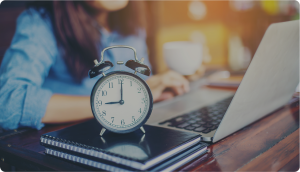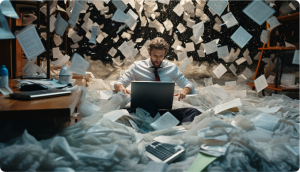
In today’s world, when digital disruption has become the norm, leveraging the latest technology has become ever more critical for companies. Legacy system modernization often directly translates to higher productivity, greater efficiency and ultimately, increased revenues.
Inside this Article
ToggleSticking to a legacy software system, on the other hand, can mean the exact opposite. So, with all the advantages that updating to newer technology offers, why do some companies still resist the change? The reason often boils down to an increase in investment of time and money.
5 Hidden Cost of Maintaining Legacy Systems
Maintaining legacy systems often comes with hidden costs and can take a significant amount of time for teams to manage and maintain effectively. While this short-term investment might seem manageable, it can lead to long-term disadvantages. Here’s how continuing to use a legacy system can put your company at a serious disadvantage due to these hidden costs.
1. Higher long-term costs
While many companies stave off legacy system modernization because of the cost associated with them, ironically, the cost of maintaining legacy systems can actually be higher. Legacy systems usually require more maintenance and might require more frequent changes of hardware. All of this can add up to an increased spending on IT hours, vendors and suppliers. Weighed side-by-side, new technological systems can work out to be a lot more cost-effective than their antiquated counterparts.
2. Vulnerable to security threats
These days, there is an increased focus on cybersecurity. New legislation such as GDPR have placed huge penalties in case of cybersecurity breaches and data leaks. Most legacy systems are simply not equipped to provide adequate protection against malicious attacks. There are two major reasons for this. First, older legacy systems often carry decades-worth of data which are a treasure trove for any hacker. This makes these systems more likely to be a target for attacks. Second, the security of software is maintained through continuous security updates. When a legacy software system becomes outdated, the software developer will stop creating and sending updates. This can leave legacy systems wide open for a cyberattack.
3. Revenue Loss Due to Mobile Compatibility Issues
Most legacy systems were developed during a time when desktops were still the primary way to access the internet and mobiles contributed to a significant (in some cases, non-existent) portion. Today, of course, this scenario has completely reversed. A huge majority of consumers are now accessing the internet through their phone. The extent to which their experience with a company’s online presence is positive, largely depends upon how seamless the mobile interface is
Most legacy systems are ill-equipped to cater to the mobile-first consumer. As a result, without legacy system modernization, your company could be facing a large drop-off in consumers because of a poor mobile user experience. This will ultimately translate into lost revenue opportunities.
4. Increased Operational Costs Due to Slow Legacy Systems
Apart from the cost of maintaining legacy systems, legacy software systems are often plagued with issues of speed and agility. Companies who are dependent on these are all too familiar with the long time it can take to upload or retrieve data, perform a backup or extrapolate insights and reports. The total time taken by legacy systems can be a serious drain on a company’s resources.
The cumulative time lost due to inefficient technology can prevent your team from focusing on value-driven tasks that can improve your company’s performance. In comparison, the total time taken by teams to learn and adapt to legacy modernization can be much less. New systems also promise much faster processing, cutting down the total time spent on these systems by an even greater number.
5. Cost of Integration with Modern Technology
In an effort to take the middle road, many companies often try to adopt certain types of new technological innovations while still maintaining legacy software as their backbone. While theoretically, this type of legacy system migration might sound like it offers the best of both worlds, in reality it’s a lot more complex.
Moving legacy systems to the cloud is not straightforward. It will need several upgrades to transfer these applications. It will require rehosting, Re-platforming and rearchitecting or redeveloping the application.
Most legacy software is incompatible with new technology. Because of this, staying loyal to your legacy systems might mean having to forego modern technology almost completely. This can put you at a serious disadvantage when compared to your competitors who might have already made the switch successfully. If competitor brands are offering a smoother user experience, higher security and are simultaneously driving revenue through more efficient operations, your company might be unable to close the widening gap by sticking to legacy systems.
Modernize your Legacy System
Legacy system migration can be intimidating for companies as it means letting go of systems that have been in place for decades. But when the trade-off of legacy modernization is more agile systems, higher efficiency and greater opportunities for revenue generation, it becomes clear that the switch is well worth the effort.
iTech has been providing customized software re engineering solutions since 2003. We specialize in custom software development, app development and re-engineering. Contact us today to know more about how we can bring value to your business process.







